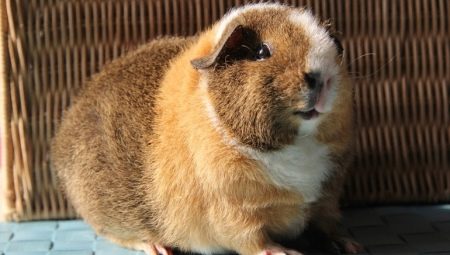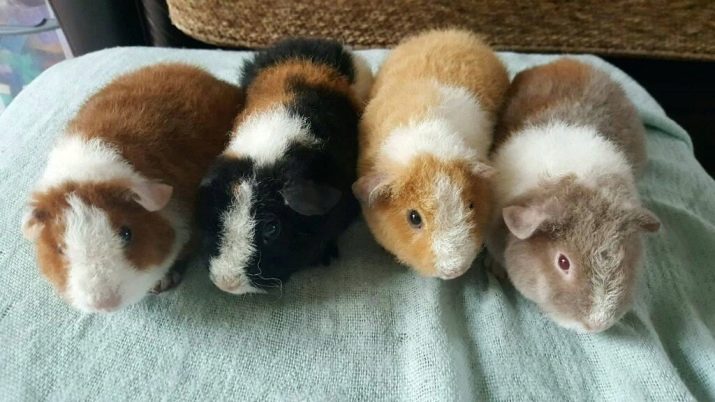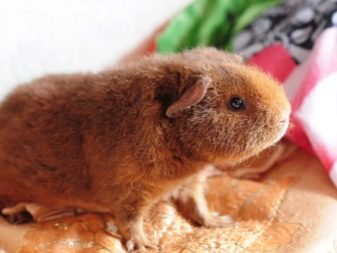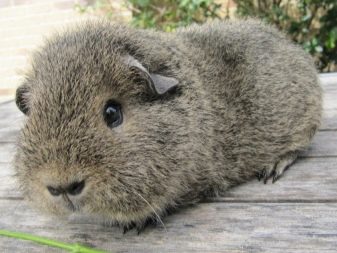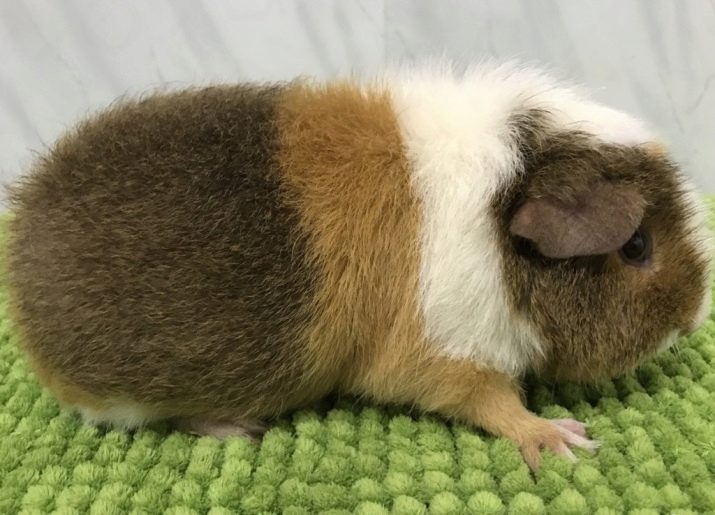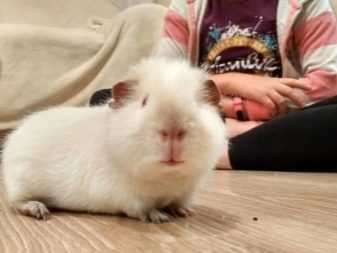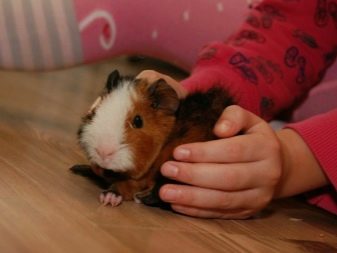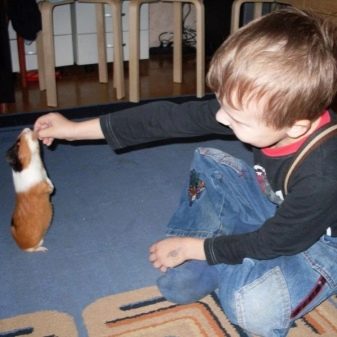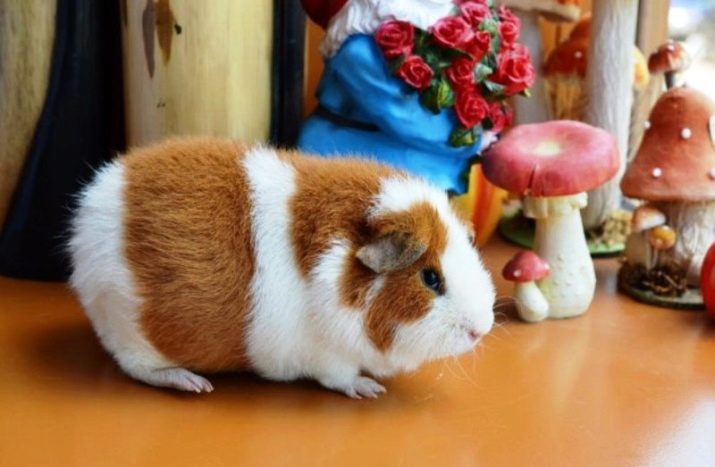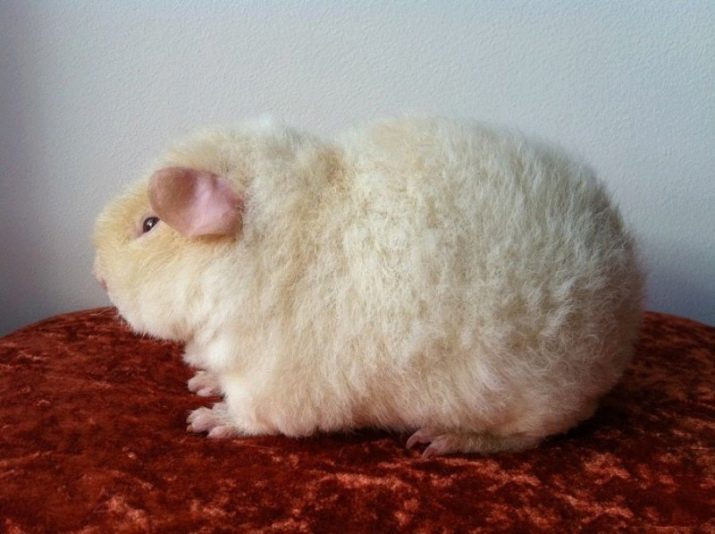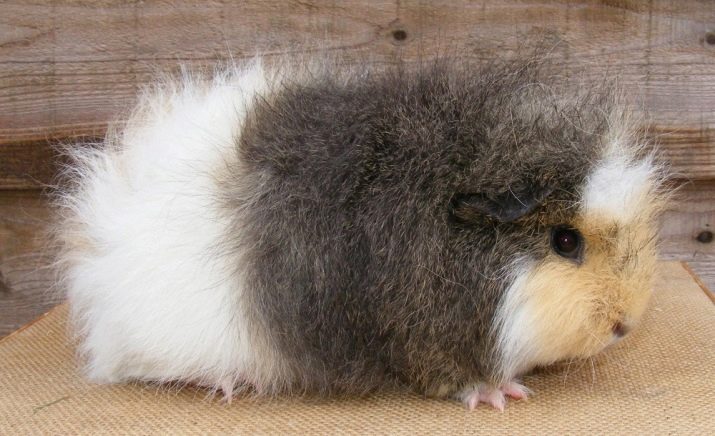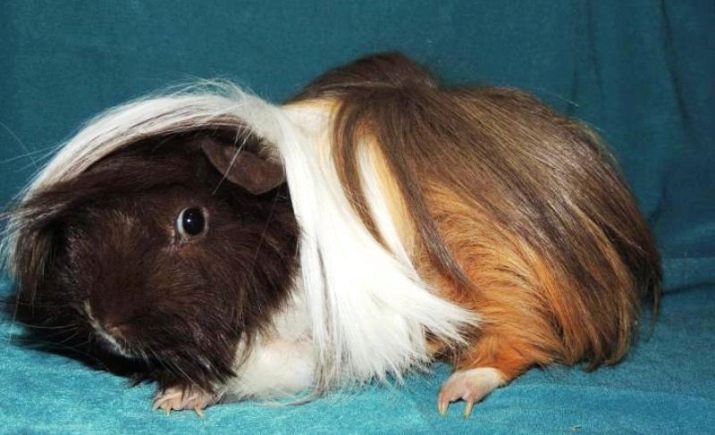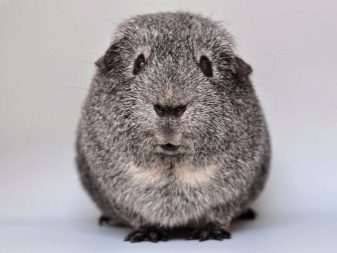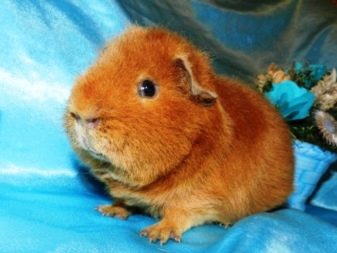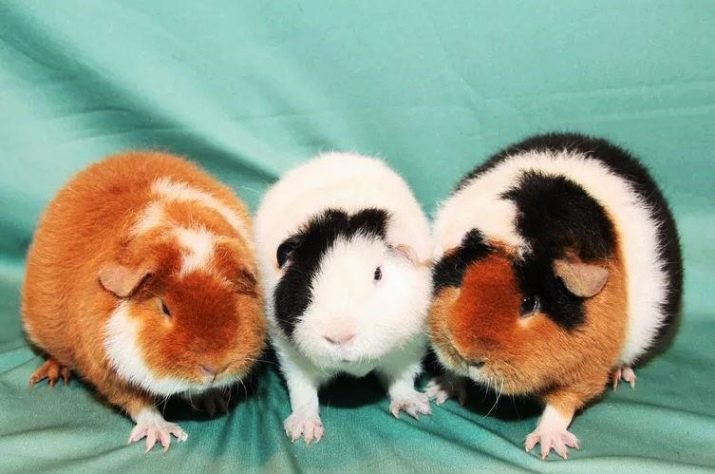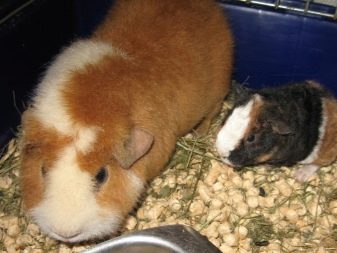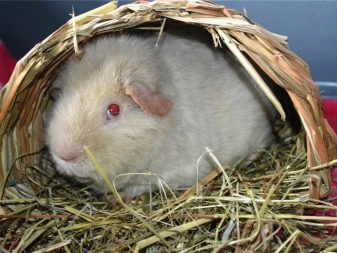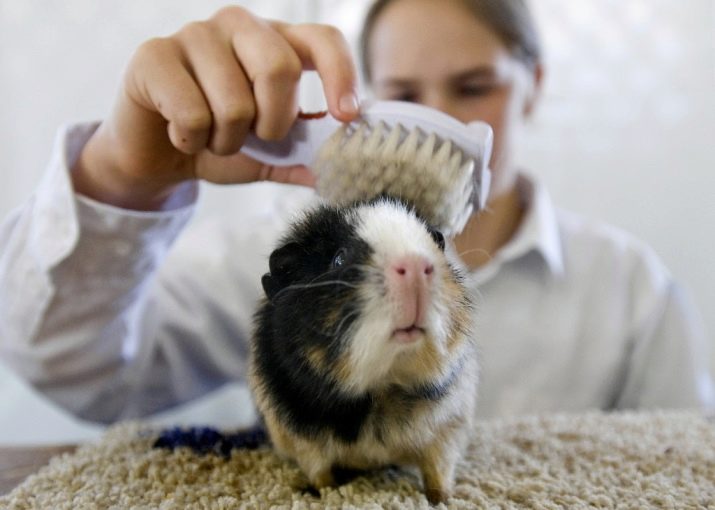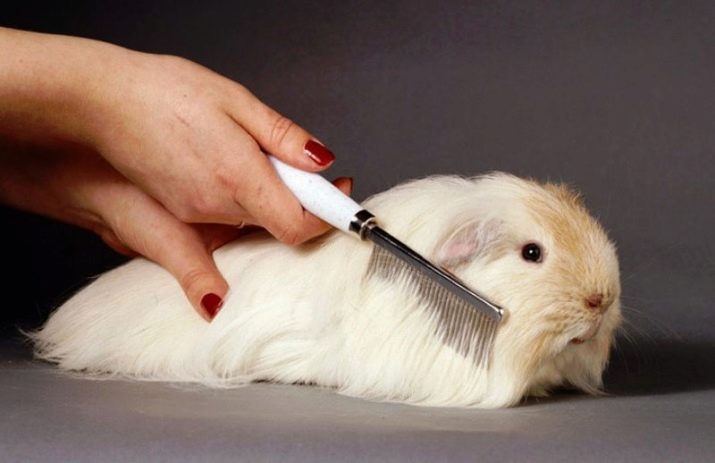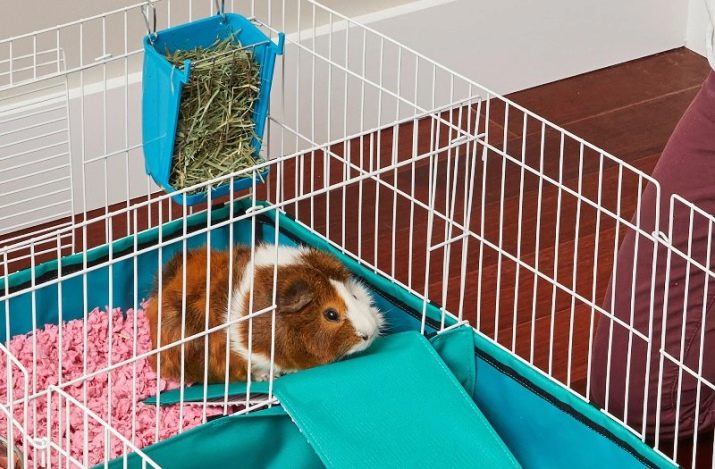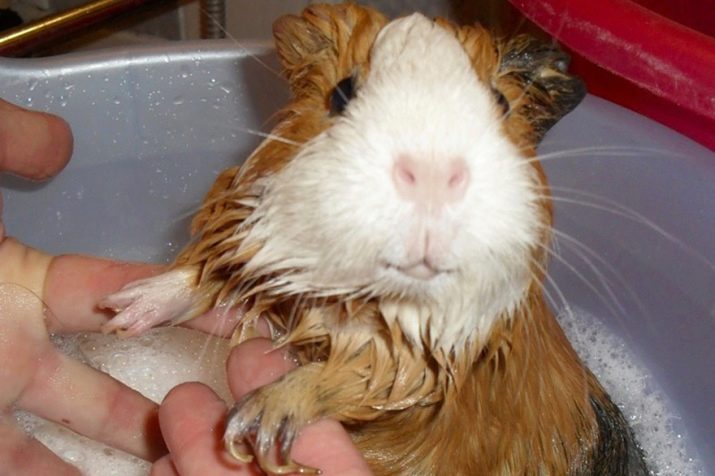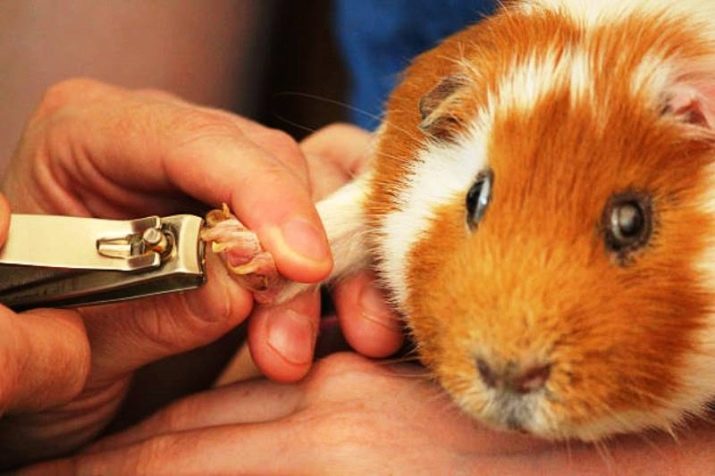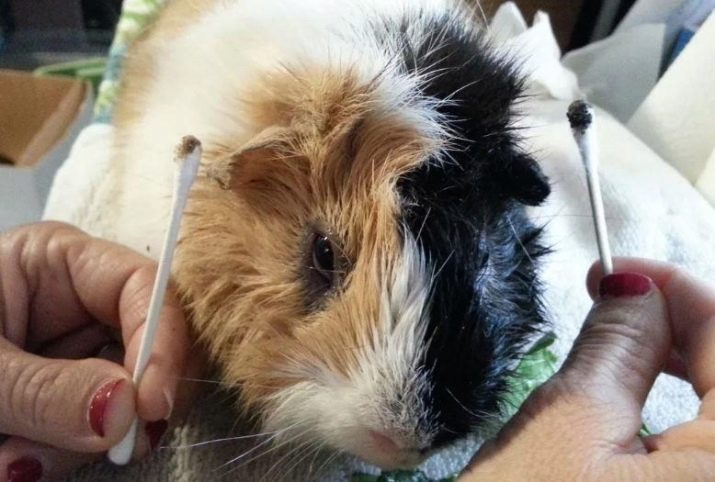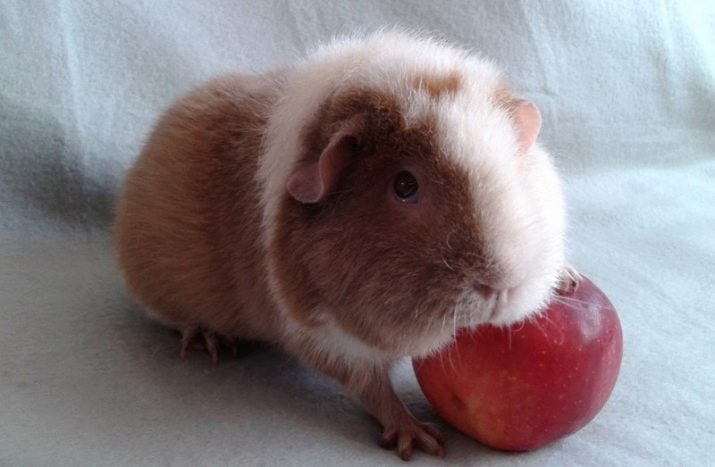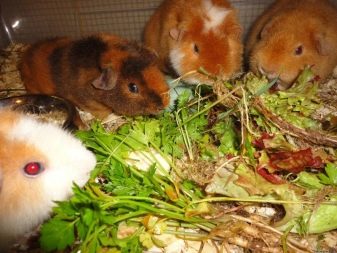Want to have a guinea pig at home, but doubt the choice of breed? Pay attention to Teddy pigs. Perhaps you will fall in love with these cuties and one of them will become not only your friend, but also a favorite for every member of your family.
Description
Teddy Guinea Pig is from Canada. These animals appeared as a result of a natural mutation in the 60s of the last century. The animals were so similar to the famous teddy bear that they had such an unusual name. Officially, this breed was recognized only in 1978. On the territory of Russia, such animals appeared only a few years ago, but this did not prevent them from quickly becoming popular.
In terms of appearance, Teddy is very similar to Rex. Find differences will be only a specialist. If you cross these two breeds, you get offspring with smooth hair.
Teddy pigs are characterized by impressive size. The weight of adults can vary from 900 to 1400 grams. The body of these animals is proportional and muscular. A rather wide muzzle has a slightly flattened shape, but the cheeks are very plump and covered with protruding hairs. The nose is somewhat bent, round eyes resemble beads. The ears are small, hanging, not covered with hair and have no wrinkles, by standards they should not touch the head.
Due to the rounded shoulders, the wide withers are formed. Wool can have different colors: from light sand to chocolate, almost black, and fiery. You can meet representatives of this breed with three or even four tones in color. By the standards of such pigs, all shades should be present on both sides of the body.
Wool has a small length, but the touch is tough and elastic. Because of these features, hair does not fit the body, but sticks out. Even if you press the wool, it will still immediately return to its previous position. In babies, the hairs are soft, even slightly curly, but as the pig grows older, the scalp changes its structure.
By the number of curls can be judged on the quality of wool, which will be an adult animal.
Character
Teddy pigs are distinguished by appeasable friendly character. In addition, they are active and mobile, although they have impressive dimensions. These animals love communication, because they get along well not only with humans, but also with other pets.. However, for the same reason, they may require attention or even follow their master on their heels.
Aggression to guinea pigs is not peculiar in principle. Even their dissatisfaction with something they express by pushing away the muzzle of a hand or an object that they don’t like. Teddy do not bite and do not scratch. Very fond of a relaxed atmosphere. Sometimes it may even seem that the pet is sick, when in fact he just does not want to actively move.
These guinea pigs can be taught tricks, if you pay them daily attention, be patient and restrained. Even without training, animals can stand on their hind legs when they want to beg for a treat. These pets give to stroke the stomach, which is uncharacteristic for other domestic rodents.
When communicating with its owner, mumps can make cooing sounds that look cute and funny.
Lifespan
In favorable conditions with proper care and good nutrition, the Teddy guinea pig can live up to 8 years. This is the maximum rate. Usually animals live up to 6 years.
Kinds
There are three varieties of this marine breed. pigs.
American Teddy most similar to the bear. The body of these animals is covered with stiff, protruding hair, and villi are clearly visible around the muzzle. The ears are very large, hang down without creases. According to experts, an extended body is a disadvantage of American Teddy.
The offspring of such a species cannot be obtained by crossing representatives of different breeds, which is explained by the uniqueness of the gene formula.
Swiss teddy is a new subspecies of this breed. A distinctive feature is a very hard wool, which can even break from mechanical stress. The hairs can reach 6 cm in length. Externally, these pigs resemble a woolen lump.
- Longhair teddy were withdrawn in Moscow, because they are firmly entrenched another name - Moscow Texel. Such a variety appeared quite recently, because its standards are still at the stage of formation. The wool of such animals is wavy, soft, up to 15 cm in length, which makes the appearance of these pigs original and very unusual. The hair on the head is shorter. The difference between the Moscow Texel is a pretty bang.
We should also talk about the color of Teddy Guinea Pigs. The most common German standard. All existing stains are divided into two large groups. The first included recognized suits, or official. These include the following colors:
silver and gold agouti;
red and black monophonic;
gold with black eyes;
white with red or black eyes;
tortoise monophonic or with the addition of white, black and (or) red shades.
The second group includes suits that are temporarily approved:
gold, chocolate and cream;
agouti gray, brown, cream or salmon;
combination of silver and white;
Agouti golden with white;
combination of four colors.
Care instructions
The content of the Teddy Guinea Pig is simple and no different from the conditions that are required for representatives of other breeds. If you didn’t have to deal with such animals before, you should definitely read the care recommendations.
Due to the high activity and impressive size of an animal, a large cage with metal rods is needed for its maintenance. It is undesirable to use an aquarium.
A special filler that can be replaced with straw and sawdust is best suited for bedding. You need to update the filler from one to three times a week.
Fur of small length requires a minimum of care, but twice a week you need to remove dead fibers. Usually, this procedure animals like. You will need to lightly comb the pig in the direction of hair growth, and then in the opposite direction.
Fur can form mats that need to be combed out. Large formations are neatly cut with scissors, and new wool grows in a short time.
If dandruff is found, the comb should be moistened in water with tea tree oil.
With high air dryness, you can put a humidifier near the cage. The dwelling of the guinea pig should not be located near the heating devices, in the draft and under direct sunlight.
In calm, clear and warm weather, it is advisable to take Teddy’s pig for walks. She would love to run on the grass, but not wet. Also, the animal must be daily released from the cage for free movement around the apartment.
Although pigs are called sea, but they really do not like to swim. This process can even be stressful for them. It is possible to bathe a pet only as a last resort and not more often than once a year.
And it is better to do without water treatments at all, because guinea pigs are great neat and their fur coats are always kept in perfect purity.
Periodically need to trim the claws of the animal.To do this, you need to adjust the special tweezers. It is important not to cut too much, so that blood vessels and nerve endings are not affected.
- Ears in Teddy Guinea Pigs have a specific structure, causing some problems. Inside accumulates a large amount of sulfur that needs to be removed. If this is not done, then problems with the ears can not be avoided. To remove sulfur, it is convenient to use a wet cotton pad with the addition of vegetable oil, which softens the pollution.
Animals do not like this procedure, they strongly oppose it, but despite this, it is necessary to clean the ears of Teddy guinea pigs.
Diet
Guinea pigs are herbivores, because animal products are contraindicated. The selection of the diet should be approached carefully and carefully, otherwise the animal may suffer from problems in the digestive system or even die. Follow the advice of experts, and your pet will grow healthy and happy.
Hay is the basis of the ration for guinea pigs. This product must always be in a cage. It ensures the normal functioning of the digestive tract and allows the animal to grind down its teeth.
Vegetables and root vegetables are the second important component for the formation of a normal and complete diet for guinea pigs. Animals will be happy to eat carrots and apples, beets and celery. Useful and cherry twigs. All these products for gilts are sources of vitamin C. This important component is not produced by the body, so animals should get it from food.
Germinated cereals are also helpful. These may be peas, corn, wheat, oats.
Water for drinking must always be present in the cage.
Sunflower seeds sunflower and wheat germination contribute to the prevention of dandruff.
In no case should animal products, including milk and eggs, get into the feeder. Fruits with high sugar content should be given to pigs less often. Such products should be perceived as treats.
For information on how to keep Teddy Guinea Pigs, see the following video.
